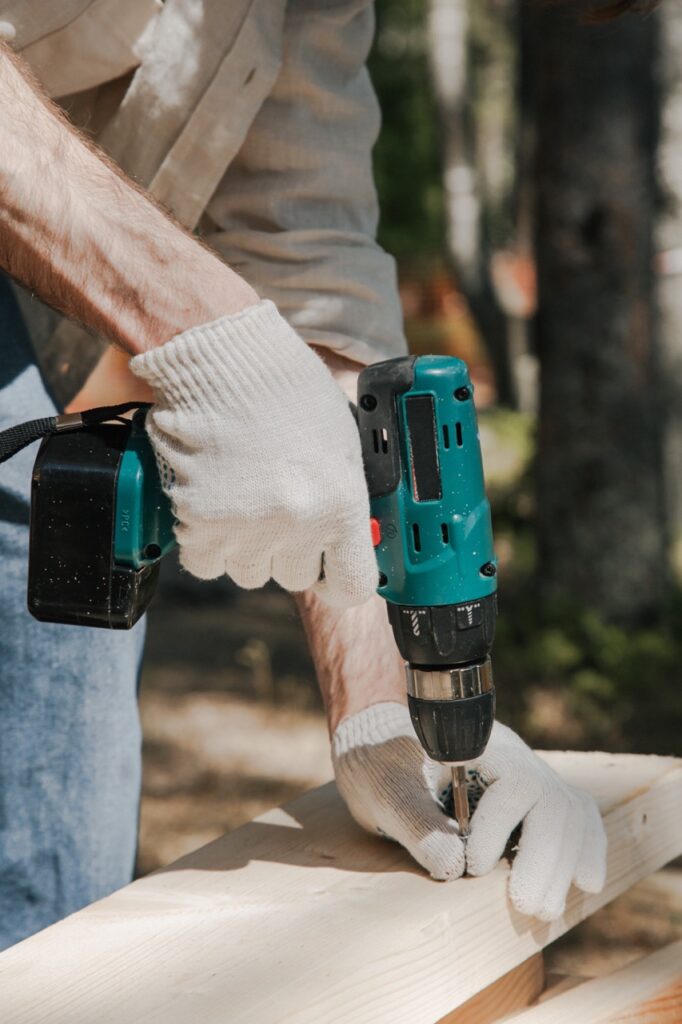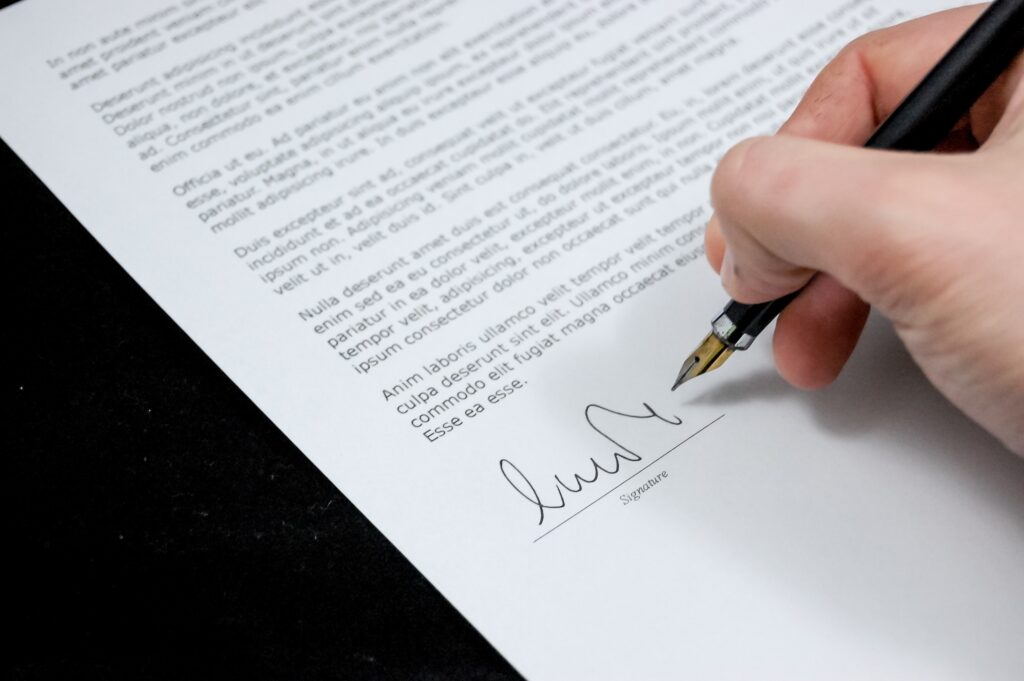Of all the bureaucracy in the construction world, there is one piece of paperwork that can truly make or break your project: the construction lien waiver. Done right, this important document has the power to guarantee you get paid on time throughout the duration of the project — without having to chase payments from the property owner. But get it wrong, and you can be at risk of losing your legal options if the client refuses to pay you for your work.
In this guide, the team at Northwest Lien discusses the key facts you need to know about construction lien waivers. We’ll cover the different types of lien waivers, how to use each type to your advantage, and the red flags to look out for. Keep in mind that we’re not lawyers and none of our recommendations should be considered legal advice, but we know enough to support your understanding of the next steps based on your unique situation.
A construction lien waiver is a legally binding agreement restricting the signer’s right to seek a lien. This typically is used when a claimant, usually a contractor or supplier, has received the agreed-upon payment and therefore forfeits the right to file a lien.
It’s important to note that prior to filing a lien, you must submit what’s known as a preliminary notice or notice of intent to lien. Learn more about this process and explore our resources for WA state notice of intent to lien or Oregon notice of intent to lien.
Before we get any further into the details of the waiver, it’s also worth reviewing how a construction lien works.

A construction lien, also known as a mechanic’s lien, is a right to keep property belonging to someone else until they have paid their debt. Many states have laws that allow you to place a lien for services rendered to improve the owner’s property. Here’s what qualifies as “improvement”:
If you have performed these services and the client doesn’t pay you, you can file for a lien. The owner of a property denying you payment for your services will then either have to pay or release the property.
However, property owners don’t like liens — and with good reason. It’s so much of a threat, in fact, that unscrupulous contractors have been known to present unexpectedly large bills for materials and labor at the end of a project, and then use their lien rights to force the client to either pay or lose their property. (We don’t recommend this strategy.)
Lien waivers protect the client from this risk, but they also mean the contractor loses their right to the lien and could be left with non-payment. To mitigate this risk, lien waivers are typically used as a form of payment receipt. As you receive money for your work, you gradually relinquish your rights to file a lien on the property.
Lien waivers are common in Washington building projects. The state laws do not provide nor require statutory form for the lien waiver, so you or the owner of the property can write a lien waiver with whatever form you want, and request it whenever you want.
Washington’s laws on lien waivers in construction are also rather silent on matters regarding any prohibition and limitation, which means there are no specifications about what should be in the agreement. This leaves room for various interpretations, so it’s important to check the waiver thoroughly, and seek advice from an expert familiar with lien waiver requirements and laws.
If you ever sign a lien waiver on one of your construction projects, remember that Washington state also does not require you to notarize the lien waiver. Read more on how to file a mechanic’s lien in Washington state here.
Like in the state of Washington, Oregon lien laws do not require a specific form related to lien waivers, or control what language the waiver includes. There are no regulations on the time period in which you can request or provide an effective waiver.
Lien waivers in Oregon can also take effect even before any work has been performed, or when work has been done but not paid for; this is known as an advance lien waiver. As with Washington, there is no need for you to notarize lien waivers in Oregon: they are legally binding as soon as they are signed and any conditions are fulfilled. Find out more on how to file a mechanic’s lien in Oregon here.
Even though some states don’t let interested parties give up lien rights in contracts or before getting paid, Washington and Oregon are both exceptions. These states let people give up some lien rights in advance, so it’s important for everyone involved to check their contract for the “no lien” clause. We recommend contractors do not agree to “no lien” clauses and only give up lien rights for work that has already been paid for.
Although construction lien waivers are not mandatory in Washington and Oregon, they are a common part of construction transactions. As mentioned earlier, this is primarily to protect the client from losing their property through a lien if there is a disagreement about payments in the future.
Lien waivers in construction are a way of building trust and transparency between the contractor and the paying party. They act as proof of payment for both parties, where the receiving party acknowledges receipt of payment by signing the lien waiver. They also promise that they will not file a mechanic’s lien relating to the amount paid.
In a lien waiver, the payor or paying party is usually the general contractor. They will collect and track all lien waivers filed from subcontractors and suppliers involved with the construction project, then submit those to the property owner. By protecting the property owner with lien waivers, you facilitate the forward movement of the project and can ensure the owner pays in accordance with the agreed schedule. If you are a subcontractor working on a project under a general contractor, read our article on general contractors refusing to pay subcontractors to ensure you protect yourself adequately, especially before signing a lien waiver.
Lien waivers come in different types, and it is important to understand the difference so that you have a clear picture of your rights in each case. The two main categories are conditional and unconditional lien waivers.
Conditional lien waivers are agreements that limit your rights to a lien, provided certain conditions are met. Typically, these conditions relate to the payments you will receive from the property owner in exchange for the work done. Once the owner fulfills those conditions, the waiver comes into effect, and you cannot claim a lien against their property for the amount stated in the lien waiver.
There are two types of conditional waivers:
Because these waivers are conditional, you only lose your right to file a lien for this payment if the client pays you the agreed amount. As soon as the payment is made, the waiver comes into effect, and the client is protected from the threat of a lien. If no payment materializes, you still have your right to file a lien and get paid that way.
Conditional waivers give you more legal security than an unconditional lien waiver. In signing the conditional lien, you agree to accept the agreed payments in the project’s next phase and give up your right to a lien on that amount if those payments are made.
Unconditional lien waivers come into effect as soon as you sign them, rather than being dependent on a payment being made. This puts you in a less secure position; if the property owner fails to pay you, you cannot file a lien and risk not getting paid at all.
Some states specifically prohibit unconditional lien waivers, to protect contractors from non-paying clients. Oregon and Washington, however, both permit these waivers, so make sure you understand the type of waiver you’re offered before signing!
There are two types of unconditional liens:
We recommend conditional waivers over unconditional waivers, and you should never sign an unconditional lien waiver for a payment you haven’t yet received.
The terms “lien waiver” and “lien release” are often used interchangeably, but they mean very different things.
While a lien waiver is a document you sign relinquishing your rights to file a lien, a lien release essentially cancels a lien you’ve filed. For example, if your client refused to pay and you did not have a lien waiver in place, you might file a lien against their property to recover the money you’re owed. If the owner then paid you in full, you would withdraw your lien request using a lien release.
The term for “lien release” is different in different states. In Oregon, for example, it’s termed a “satisfaction of lien”.
Because a lien against someone’s property is on public record, it can damage the property owner’s reputation. Liens expire after eight months, but they still remain on the public record. A lien release, on the other hand, removes the lien from public record, so that the owner’s future dealings are unaffected.
To maintain good relationships with your clients, it’s a good idea to release the lien as soon as the payment has cleared. Filing within ten days shows you’ve received payment and have no intention of filing a lawsuit; it’s a show of professionalism towards the payor. Leaving a lien on a property whose payment is complete can call for legal action by the property owner. Here’s more information about lien releases in Washington and lien releases in Oregon. If you filed a lien with Northwest Lien, we’d be happy to take care of the lien release on your behalf. If not, we also have a free lien release form you can use as a template while filing.
A construction lien waiver is a legally binding document, and it’s important that you know what you’re signing!
While there are 12 states that have mandatory waiver forms, the majority don’t — including Oregon and Washington. This means that each lien waiver you sign might have a very different format, content, and fine print, and you need to read it carefully.

A lien waiver relates to the payments you’re receiving, so it’s important that these details are correct. In particular, you’ll want to check that:
One of the biggest concerns is that the amounts already paid should reflect the reality of the situation. If there is a discrepancy and the amount stated in the lien waiver agreement is more than you actually received, the courts will take the amount in the signed waiver to be the truth. This could be a significant disadvantage to you if you are trying to claim unpaid dues.
In addition to the project and payment details, keep an eye out for dangerous legal language buried in the waiver that could bind you later. For example:
While the issues here can be complicated to navigate, it is often possible to negotiate the wording of the waiver with the owner. If you encounter any deeply legal language and are uncertain how it would affect you, we recommend you discuss it with a lawyer.
The decision of when to sign and send a lien waiver depends on the type of waiver you’ve agreed on with your client.
Conditional waivers can be a useful tool to help you get paid faster because they remove the risk from both sides. You are safe to sign the waiver because it is conditional on your being paid. The client is then safe to send you the payment because there is no chance of you taking the money and filing a lien for the same amount. This means that signing and sending conditional waivers promptly can speed up your cash flow!
For unconditional waivers, on the other hand, it is important only to sign the document when the money is in your hands. Even if you’ve received a bank check, don’t sign an unconditional waiver until the check has cleared and the funds are accessible.
The legal world of liens and waivers is not an easy one to navigate, and it helps to have an experienced advocate at your side. At Northwest Lien, we understand the process, and we’re here to guide you throughout. If you need advice on construction lien waivers, want to file a lien, or find you aren’t getting paid for work done, contact Northwest Lien and we’ll advise you on the best solution.


